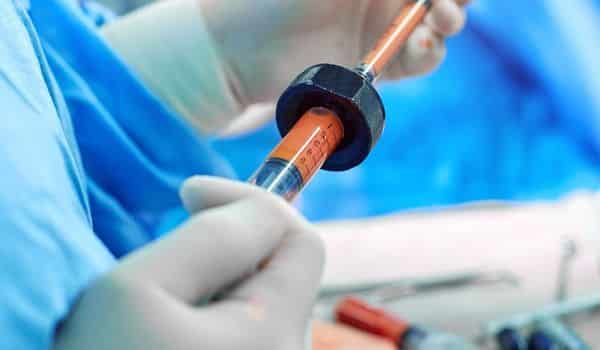Surgical Solutions to Correct Breast Ptosis/Droopiness
When weight loss occurs, the body undergoes several changes that can affect its overall function and appearance. One of the most significant changes is a reduction in body fat, which can lead to a decrease in overall weight and improvements in body composition. However, weight loss can also lead to some unwanted side effects such as drooping breasts. If you are experiencing drooping breasts after weight loss, you should know that there are solutions to fix breast sagginess.
Sydney Plastic Surgeon Dr Michael Kernohan is a caring and highly experienced surgeon that can help you correct breast ptosis with the help of plastic surgery.
Take the Quiz
Why Do Breasts Droop After Weight Loss?
If you’ve experienced weight loss, you may have noticed that your breasts have started to sag. This is a common concern, especially for women, due to the composition of breast tissue.
The reason for this sagging is due to a decrease in breast tissue volume, which is caused by the loss of both glandular and fatty tissue. When you lose weight, the loss of fatty tissue is more significant, which can cause your breasts to lose their shape and appear deflated.
Additionally, the ligaments that support your breast tissue can become stretched or weakened due to the effects of gravity over time. When your breasts lose their fatty tissue, there is less support for the breast tissue, which can lead to sagging.
If you’ve experienced sudden weight loss, you may also have lost skin elasticity. The skin around your breasts can become stretched during weight gain, and it can lose its ability to retract when the fat is lost. This can lead to sagging, loose, or wrinkled breasts.
To prevent further sagging, it’s essential to maintain a healthy weight. Wearing a well-fitted bra can also provide support for your breasts. If you’re concerned about the appearance of your breasts after weight loss, consult with a medical professional to determine the best course of action for you.
How to Correct Drooping Breasts after Weight Loss
If you are considering correcting drooping breasts after weight loss with plastic surgery, there are two popular options available: breast lift (Mastopexy) and breast augmentation. A breast lift surgery removes excess skin and tightens the remaining skin to lift and reshape sagging breasts. A breast augmentation enhances the size and shape of the breasts by placing implants under the breast tissue or chest muscle.
Both procedures can be performed alone or in combination to restore lost volume and achieve a natural-looking result. It is important to consult with a specialist plastic surgeon who can assess your needs, evaluate your medical history, and provide you with information on the risks and benefits associated with each procedure. Recovery typically involves a period of rest and limited physical activity, with most patients returning to work and light activities within a week or two. However, keep in mind that full recovery can take up to several months.
Breast Augmentation after Weight Loss
Breast augmentation is a cosmetic surgical procedure that involves placing implants to enhance the size and shape of the breasts. After weight loss, breast augmentation can help to restore lost breast volume and improve breast symmetry, depending on the extent of the loss.
Weight loss can cause a decrease in breast volume due to loss of fatty tissue. This can lead to sagging or drooping of the breasts, as well as asymmetry or unevenness between the two breasts. Breast augmentation can address these concerns by adding volume and creating a fuller, more proportionate breast appearance.
During the procedure, implants are placed either under the breast tissue or under the chest muscle, and can be filled with either silicone or saline. Implants come in different shapes and sizes, allowing for a customised result based on individual preferences and body type. The procedure can be performed on an outpatient or inpatient basis under general anaesthesia, and recovery time varies from person to person.
Breast augmentation can be an effective solution to restore lost breast volume and improve breast symmetry after weight loss.
Breast Lift after Weight Loss
A breast lift is a surgical procedure that can help to address sagging or drooping breasts after weight loss. This is because weight loss can cause a decrease in breast volume and affect the skin’s elasticity, which can lead to sagging or drooping of the breasts. Depending on the severity of the ptosis (droopiness), this may be a medical procedure. Most cases of breast lift/Mastopexy, however, are considered cosmetic.
A breast lift involves removing excess skin and tightening the remaining skin to create a firmer, more lifted appearance. The nipple and areola are also repositioned to create a natural-looking breast shape. This procedure can help to lift and reshape the breasts.
A breast lift can be performed alone or in combination with other procedures, such as breast augmentation, to address issues related to lost breast volume. The procedure is most often performed as an inpatient under general anaesthesia, and recovery time varies.
Fat Transfer to Correct Drooping Breasts

Fat transfer can also be used to correct mildly drooping or deflated breasts. Also known as fat grafting or autologous fat transfer, fat transfer is a cosmetic surgical procedure that involves removing fat from one part of the body and transferring it to another.
During a fat transfer procedure, fat is harvested from an area of your body where excess fat is present, such as the abdomen or thighs, through liposuction. The harvested fat is then purified and injected into the breasts to add volume and lift. This can help to improve the shape and symmetry of the breasts, as well as minimise sagging or drooping.
Fat transfer can be a good option for those who prefer a more natural approach to breast augmentation, as it uses the patient’s own fat cells instead of implants. It can also be a good option for those who are not candidates for traditional breast augmentation due to medical reasons, such as a history of breast cancer. This procedure may be a good option for patients who only require a mild change.
It is important to consult with a specialist plastic surgeon to evaluate your individual needs and ensure that fat transfer is the right choice for you. Recovery time varies from person to person, but usually patients can return to work and light activities within a week or two, with full recovery taking several months.
Click to Download Dr Michael Kernohan Cosmetic Breast Surgery Guide

What Is the Optimal Solution for My Drooping Breasts?
To find the optimal solution for drooping breasts after weight loss in your particular case, it is important to consult with a specialist plastic surgeon. He can evaluate your individual needs and assess factors such as breast size, degree of sagging, overall health, and personal preferences to determine the best course of action for you.
During your consultation, the plastic surgeon will discuss various options available to correct drooping breasts after weight loss, including breast lift, breast augmentation, fat transfer, or a combination of procedures. They will provide you with information on the risks, benefits, and recovery associated with each procedure and help you make an informed decision.
It is important to ask questions and share your concerns with the plastic surgeon to ensure that you receive personalised care throughout the process. He can also provide you with before and after photos of previous patients to give you an idea of the results you can expect.
In addition to consulting with a plastic surgeon, it may also be helpful to research and read about the experiences of others who have undergone similar procedures. This can help you gain a better understanding of the process and prepare for what to expect.
FAQs about Drooping Breasts after Weight Loss

What causes drooping breasts after weight loss?
- Drooping breasts after weight loss occur due to a loss of volume in the breasts as a result of fat loss. This can cause the skin and tissues to sag, leading to a deflated, empty breasts appearance.
Can exercise help with drooping breasts after weight loss?
- While certain physical exercises can help build up the muscles underneath the breasts, providing more support and lift, exercises can’t correct breast ptosis. Once the skin and ligaments of your breasts have been stretched too much, the chances are they won’t get back to their natural position after weight loss occurs. Plastic surgery can correct droopy breasts by eliminating the excess skin tissue and recontouring the breasts.
What is breast lift surgery, and is it an effective option for drooping breasts after weight loss?
- Breast lift surgery (Mastopexy) is a surgical procedure that involves removing excess skin and tissue from the breasts and lifting them to a more natural position on the chest wall. It can be an effective option for those with severe drooping or sagging breasts after weight loss.
Are there any non-invasive treatments for drooping breasts after weight loss?
- While there are no non-invasive treatments that can provide the same level of results as breast lift surgery, there are several minimally invasive treatments that can help improve the appearance of drooping breasts. These include injectable fillers, and laser or radiofrequency treatments, which may tighten and firm the skin around the breasts.
Further Reading about Breast Surgery with Dr Kernohan
- Read Dr Kernohan’s Breast Augmentation Surgery Page
- Read Dr Kernohan’s Breast Lift with Implants Surgery Page
- Read Dr Kernohan’s Mini Boob Job Sydney page
- Read Dr Kernohan’s blog about Round Vs Teardrop Implants – What Is the Best Option?
- Read Dr Kernohan’s blog about How to Get Firmer Breasts
- Read Dr Kernohan’s blog about Should I Have a Breast Lift or Breast Implants?





